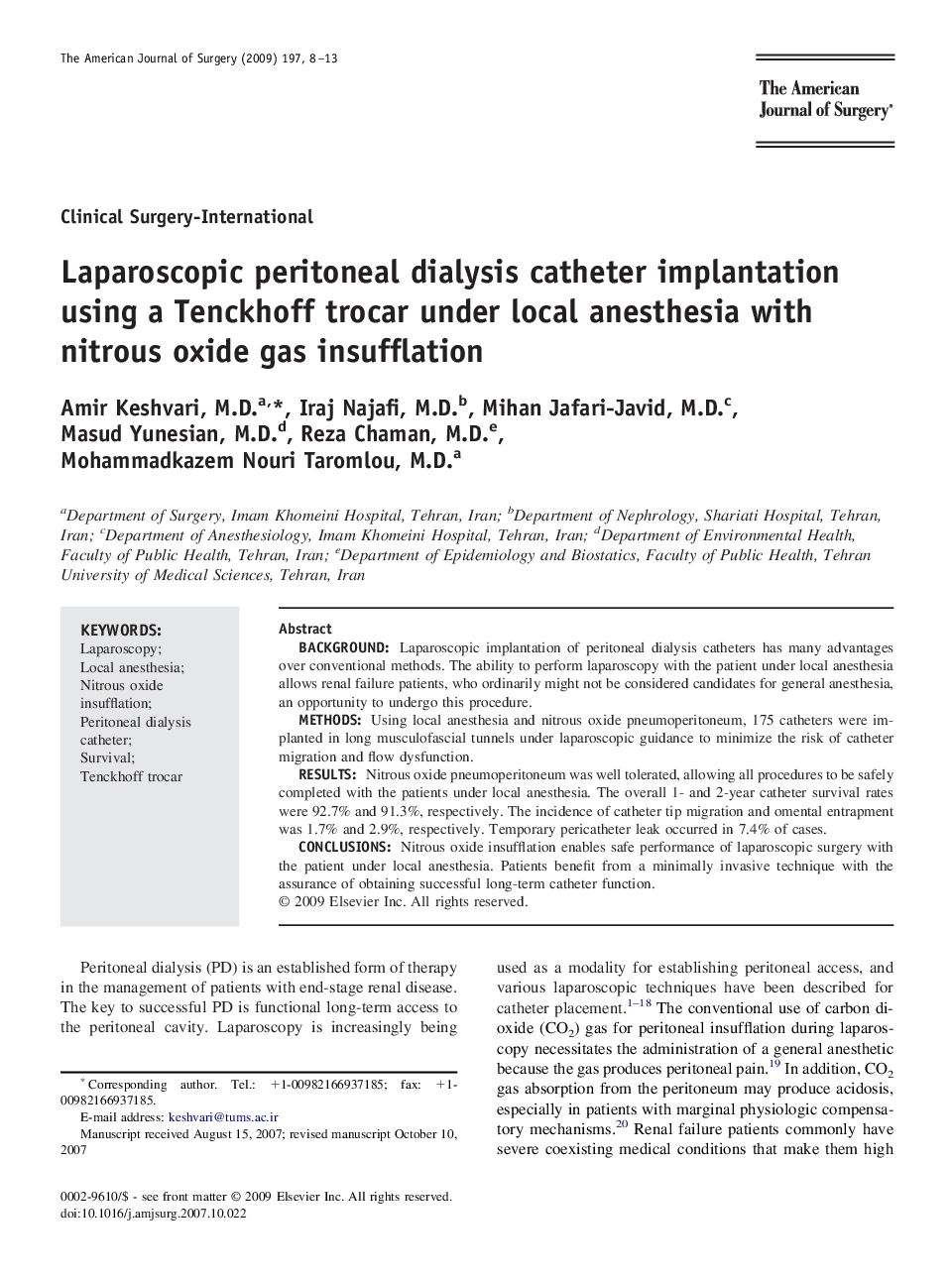| Article ID | Journal | Published Year | Pages | File Type |
|---|---|---|---|---|
| 4280558 | The American Journal of Surgery | 2009 | 6 Pages |
BackgroundLaparoscopic implantation of peritoneal dialysis catheters has many advantages over conventional methods. The ability to perform laparoscopy with the patient under local anesthesia allows renal failure patients, who ordinarily might not be considered candidates for general anesthesia, an opportunity to undergo this procedure.MethodsUsing local anesthesia and nitrous oxide pneumoperitoneum, 175 catheters were implanted in long musculofascial tunnels under laparoscopic guidance to minimize the risk of catheter migration and flow dysfunction.ResultsNitrous oxide pneumoperitoneum was well tolerated, allowing all procedures to be safely completed with the patients under local anesthesia. The overall 1- and 2-year catheter survival rates were 92.7% and 91.3%, respectively. The incidence of catheter tip migration and omental entrapment was 1.7% and 2.9%, respectively. Temporary pericatheter leak occurred in 7.4% of cases.ConclusionsNitrous oxide insufflation enables safe performance of laparoscopic surgery with the patient under local anesthesia. Patients benefit from a minimally invasive technique with the assurance of obtaining successful long-term catheter function.
